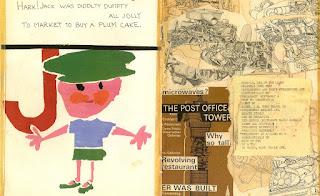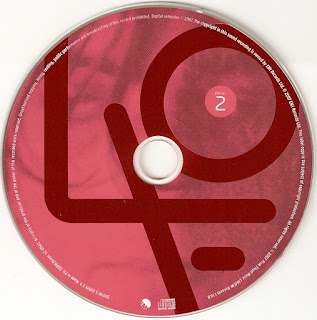The Piper at the Gates of Dawn is the debut studio album by the English rock band Pink Floyd, and the only one made under founding member Syd Barrett's leadership. The album, named after the title of chapter seven of Kenneth Grahame's The Wind in the Willows and featuring a kaleidoscopic cover photo of the band taken by Vic Singh, was recorded from February to May 1967 and released on 5 August 1967. It was produced by Beatles engineer Norman Smith and released in 1967 by EMI Columbia in the United Kingdom and Tower in the United States, in August and October respectively.
The release of the album in the US was timed with the band's tour of the US. In the UK, no singles were released from the album, but in the US "Flaming" was offered as a single. The US version of the album has a rearranged track list, and contains the UK non-album single, "See Emily Play". Two of the album's songs, "Astronomy Domine" and "Interstellar Overdrive", became long-term mainstays of the band's live set list, while other songs were performed live only a handful of times.
Since its release, the album has been hailed as one of the best psychedelic rock albums. In 1973, it was packaged with the band's second album, A Saucerful of Secrets, and released as A Nice Pair to introduce new fans to the band's early work after the success of The Dark Side of the Moon. Special limited editions of The Piper at the Gates of Dawn were issued to mark its thirtieth and fortieth anniversaries in 1997 and 2007, respectively, with the latter release containing bonus tracks. In 2012, The Piper at the Gates of Dawn was voted 347th on Rolling Stone magazine's list of the "500 Greatest Albums of All Time".
Architecture students Roger Waters, Nick Mason and Richard Wright and art student Syd Barrett had performed under various group names since 1962, and began touring as "The Pink Floyd Sound" in 1965. They turned professional on 1 February 1967 when they signed with EMI, with an advance fee of £5,000. Their first single, a song about a kleptomaniac transvestite titled "Arnold Layne", was released on 11 March to mild controversy, as Radio London refused to air it.
About three weeks later, the band were introduced to the mainstream media. EMI's press release claimed that the band were "musical spokesmen for a new movement which involves experimentation in all the arts", but EMI attempted to put some distance between them and the underground scene from which the band originated by stating that "the Pink Floyd does not know what people mean by psychedelic pop and are not trying to create hallucinatory effects on their audiences." The band returned to Sound Techniques studio to record their next single, "See Emily Play", on 18 May. The single was released almost a month later, on 16 June, and reached number six in the charts.
Pink Floyd picked up a tabloid reputation for making music for LSD users. The popular broadsheet News of the World printed a story nine days before the album's recording sessions began, saying that "The Pink Floyd group specialise in 'psychedelic music', which is designed to illustrate LSD experiences." Contrary to this image, only Barrett was known to be taking LSD; authors Ray B. Browne and Pat Browne contend that he was the "only real drug user in the band".
The band's record deal was relatively poor for the time: a £5,000 advance over five years, low royalties and no free studio time. However, it did include album development, and EMI, unsure of exactly what kind of band they had signed, gave them free rein to record whatever they wanted.
They were obliged to record their first album at EMI's Abbey Road Studios in London, overseen by producer Norman Smith, a central figure in Pink Floyd's negotiations with EMI. Balance engineer Pete Bown, who had mentored Smith, helped ensure that the album had a unique sound, through his experimentation with equipment and recording techniques. Bown, assisted by studio manager David Harris, set up microphones an hour before the sessions began. Bown's microphone choices were mostly different from those used by Smith to record the Beatles' EMI sessions. Because of Barrett's quiet voice, he was placed in a vocal isolation booth to sing his parts. Automatic double tracking (ADT) was used to add layers of echo to the vocals and to some instruments. The album featured an unusually heavy use of echo and reverberation to give it its own unique sound. Much of the reverberation effect came from a set of Elektro-Mess-Technik plate reverberators – customised EMT 140s containing thin metal plates under tension – and the studio's tiled echo chamber built in 1931.
The album is made up of two different classes of songs: lengthy improvisations from the band's live performances and shorter songs that Barrett had written. Barrett's LSD intake escalated part-way through the album's recording sessions. Although in his 2005 autobiography Mason recalled the sessions as relatively trouble-free, Smith disagreed and claimed that Barrett was unresponsive to his suggestions and constructive criticism. In an attempt to build a relationship with the band, Smith played jazz on the piano while the band joined in. These jam sessions worked well with Waters, who was apparently helpful, and Wright, who was "laid-back". Smith's attempts to connect with Barrett were less productive: "With Syd, I eventually realised I was wasting my time." Smith later admitted that his traditional ideas of music were somewhat at odds with the psychedelic background from which Pink Floyd had come. Nevertheless, he managed to "discourage the live ramble", as band manager Peter Jenner called it, guiding the band toward producing songs with a more manageable length.
Barrett would end up writing eight of the album's songs and contributing to two instrumentals credited to the whole band, with Waters creating the sole remaining composition "Take Up Thy Stethoscope and Walk". Mason recalled how the album "was recorded in what one might call the old-fashioned way: rather quickly. As time went by we started spending longer and longer."
Recording started on 21 February with six takes of "Matilda Mother", then called "Matilda's Mother". The following week, on the 27th, the band recorded five takes of "Interstellar Overdrive", and "Chapter 24". On 16 March, the band had another go at recording "Interstellar Overdrive", in an attempt to create a shorter version, and "Flaming" (originally titled "Snowing"), which was recorded in a single take with one vocal overdub. On 19 March, six takes of "The Gnome" were recorded. The following day, the band recorded Waters' "Take Up Thy Stethoscope and Walk". On 21 March, the band were invited to watch the Beatles record "Lovely Rita". The following day, they recorded "The Scarecrow" in one take. The next three tracks - "Astronomy Domine", "Interstellar Overdrive" and "Pow R. Toc H." – were worked on extensively between 21 March and 12 April, having originally been lengthy instrumentals. Between 12 and 18 April, the band recorded "Percy the Rat Catcher" and a currently unreleased track called "She Was a Millionaire".
"Percy the Rat Catcher" received overdubs across five studio sessions and then was mixed in late June, eventually being given the name "Lucifer Sam". Songwriting for the majority of the album is credited solely to Barrett, with tracks such as "Bike" having been written in late 1966 before the album was started. "Bike" was recorded on 21 May 1967 and originally entitled "The Bike Song". By June, Barrett's increasing LSD use during the recording project left him looking visibly debilitated.














































No hay comentarios.:
Publicar un comentario